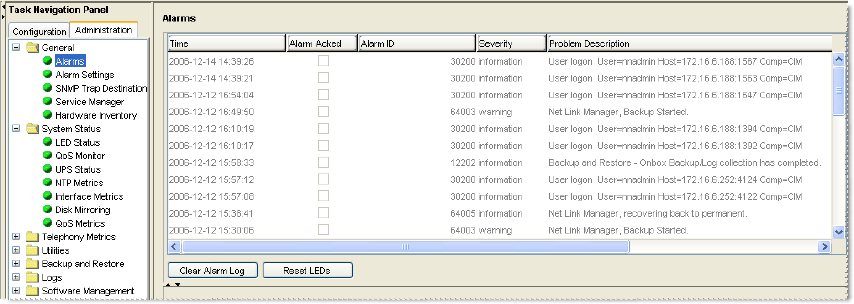Specifications

AT&T IP Flexible Reach Service
Nortel BCM200/400 (Release 4.0.2.03a) H.323 Configuration Guide
© 2008 AT&T Knowledge Ventures. All rights reserved. AT&T and the AT&T logo are trademarks of AT&T
Knowledge Ventures. Subsidiaries and affiliates of AT&T Inc. provide products and services under the AT&T brand.
Issue 1.9 Page 30 of 36
5.3 Real-time BCM Fault/Alarms Management
You can view and manage real-time alarms generated by the BCM system.
Alarms arise from components that are running on the system; these alarms
indicate faults or informational conditions that may require resolution from the
system administrator. Examples of alarm conditions include:
• T1 circuit on the system is down
• Service running on the BCM has been stopped by an administrator
Alarm information can be delivered to you by any of the following means:
• The Alarms Panel in the BCM Element Manager
• The Alarm Banner in the BCM Element Manager
• Core telephony alarms show on the alarm set
• Simple Network Management Protocol (SNMP) traps for remote
management of faults
• LEDs on the BCM main unit
Below is an example of the BCM Alarms Panel in the BCM Element Manager:
Figure 25: Real-time BCM200/400 Alarm Display
You can manage alarms and alarm information by:
• Configuring alarm settings, for example filtering alarms so that only the
desired subset of alarms are displayed in the BCM Element Manager
Alarms Panel or sent as SNMP traps
• Administering alarms, for example acknowledging selected alarms and
clearing the alarm log










